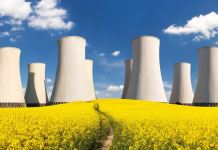Synthesis gas is a mixture of gases (carbon monoxide and hydrogen). In the early 20th century, two scientists F. Fischer and H. Tropsch invented a method of producing synthesis gas from any raw material containing carbon. This method has been named after scientists, the method of Fischer-Tropsch.
Synthesis gas is produced in different ways, so the percentage of gas constituents will depend on the method of producing the mixture gas. Sometimes in the production of synthesis gas are formed substances containing sulfur (if the raw material was sulfur-containing) and inert gases. From these impurities the gas is purified.
For the first time the synthesis gas were obtained in the first half of the 19th century in England, it was a method of coal gasification. But as popularization in the world of oil and natural gas, this method was unclaimed. The trend of reduction of carbon increases, and the method of coal gasification is now experiencing a rebirth. Today there is a question of recycling of a firm household waste, so scientists have learned to produce synthesis gas from waste.
Synthesis gas is produced by three methods:
1. The gasification of coal. It is a process in which the interacting carbon and oxidants. The reaction occurs at high temperature with absorption of heat. The oxidant can be oxygen enriched air, oxygen, СО2, water vapor, or various mixtures of these substances. The produced synthesis gas may have a different composition that depends on temperature, duration of process and source components.
2. Method of conversion of methane occurs at high temperature where the effect between water vapor and methane. The conversion happens in three ways: steam reforming, partial oxidation with oxygen and carbon dioxide conversion. In the industrial production of synthesis gas using the first method as it is more studied and applied. Steam reforming is carried out at a temperature of 700 to 900º with the participation of a nickel catalyst. The second method occurs at high temperature (1100-1300º) without catalyst, but in the factory where he used this technology, the accident occurred. So maybe this method has not received further development. The third method is still being studied. Conducted laboratory research. Each of these three methods produces a different ratio of CO and hydrogen in the synthesis gas. So in the first method the ratio of 1:3, the second 1:2 and the third 1:1. Dependent on with what is the purpose of the mixture using one of the ratios.
3. The partial oxidation of hydrocarbons is a high temperature process (above 1300º) oxidation of hydrocarbons. Here raw materials can all contain hydrocarbon, but the most effective and widely used oil.
Recently began production of synthesis gas from biomass. The processing occurs in two ways, the biological and thermochemical. The choice of method depends on the humidity of the biomass. The production of the mixture gas from dry biomass is thermochemical method (combustion, pyrolysis, hydrolysis, etc.). Dry biomass is household organic solid wastes, wastes of agriculture and woodworking. But the biomass with high humidity, which is above 75% (household liquid wastes, waste and sewage water) are recycled using biological methods.
Synthesis gas is widely used in the chemical industry. And the fact that during its combustion produces a large amount of thermal energy, makes it more environmental fuels. Also this mixture acts as raw material for the production of synthetic liquid fuel and methanol.























